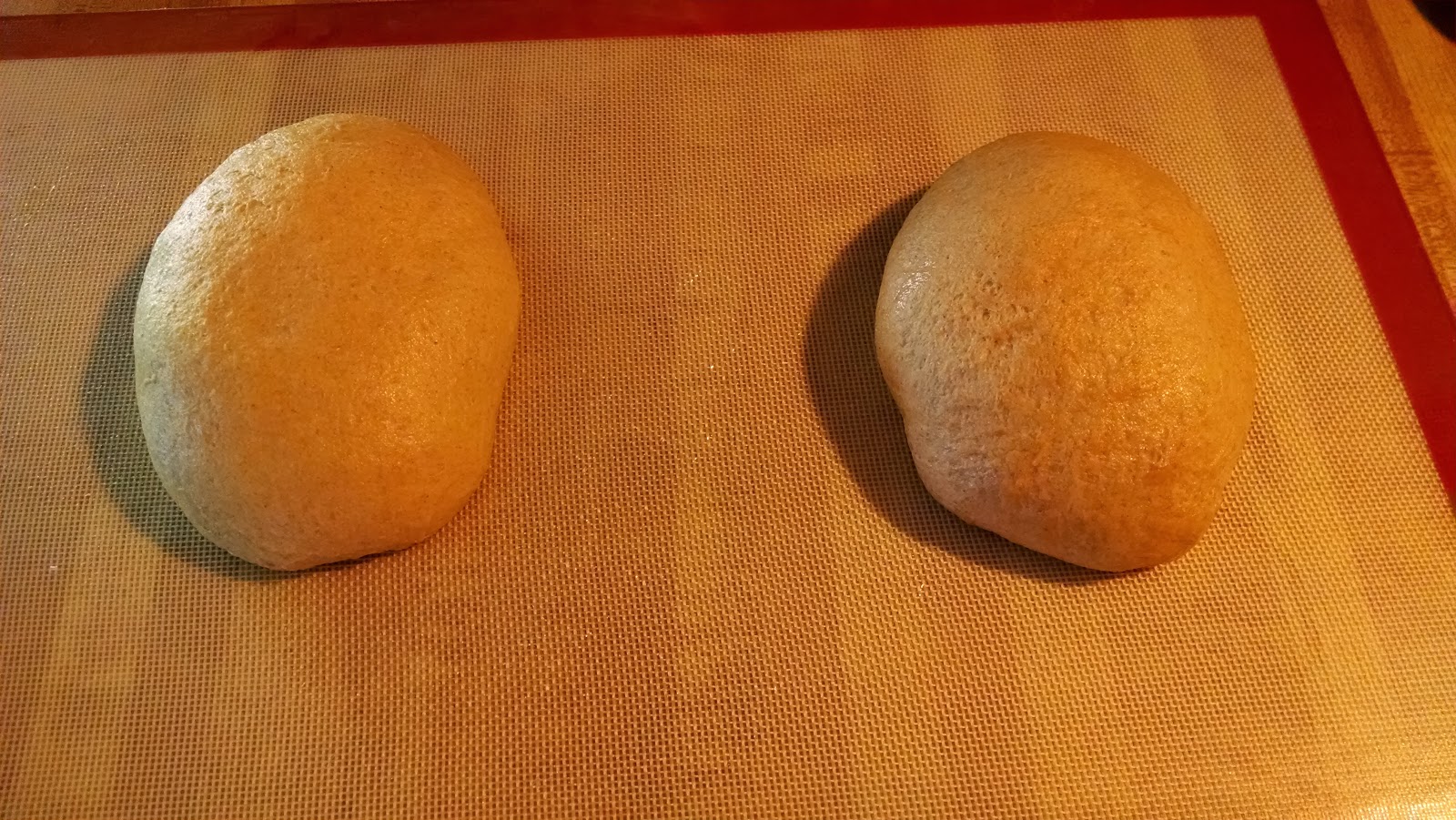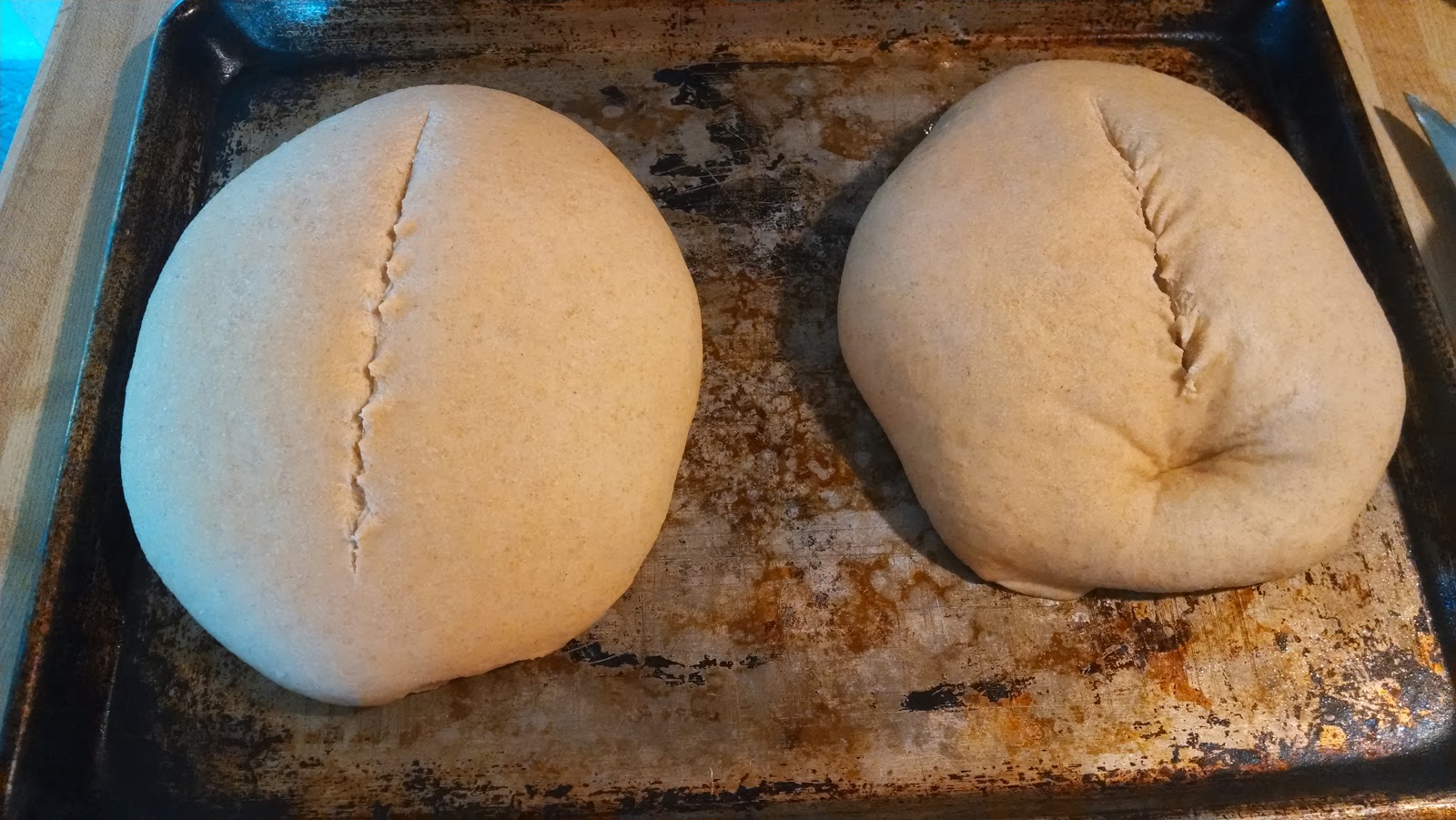What an amazing bread adventure today! My colleagues and I decided to try baking
one bread recipe with six different types of wheat all grown locally and milled at
Camas Country Mill. We have asked our students to design and test an experiment with their starters and collect some data about how the starter reacted to varying conditions. The faculty decided that we too should experiment with how different flours influence the final product of a loaf of bread. All other variable were as much the same as we could make them. Along the day of baking we observed differences in moisture content, bubbles, rising, texture, feel, and smell. Tomorrow we will taste the breads as well.
To get ready, I planned to grow up my starter so we had enough to use for all of the loaves. However, I was concerned that even though the starter had a nice smell and my baking projects were going well, that it would not be active enough to support this much bread baking.
Fortunately last week, we took our students on a great field trip to Noisette Pastry Kitchen where we got a fantastic insider perspective on artisan baking, smelled the bakery mother starters, and tasted several types of bread.
My starter came along on the
field trip and afterwards exploded in activity. Two days after our field trip and large feedings (since I learned I was likely underfeeding my starter) it even completely filled a half gallon mason jar. I saved out a large portion of this very active starter and put it in the refrigerator to prepare for the big baking day.
For the baking day, we prepared six sponges with six different types of flour. Front to back: Red Fife Wheat, Barley, Hard Red Wheat, Artisan Blend (60% Hard Red, 30% Red Fife, 10% Rye), Emmer, and Rye. The texture after 12 hours of fermentation ranged from wet, to fluffy, to dry.
We were impressed as we started to knead the dough in preparation for the first rise how different the textures were. The Red Fife was great to work with; it was soft and pliable and quickly formed a ball.
The Emmer was also very soft a pliable and easy to work with; it had a very airy and silky texture.
The artisan blend and the hard red wheat (very similar in composition) took a much longer time to knead but managed to change texture after a longer kneading into a workable dough.
The barley was like playdough. It was hard to work with and took very little flour.
After rising for 2 hours and 30 minutes (and all getting some work done!), we punched down the dough and shaped them into relatively equivalent loaf pans. The hard red wheat was very solid when "punched;" it even made an amazing "thunk" noise.
Left to Right: Red Fife Wheat, Barley, Hard Red Wheat, Artisan Blend, Emmer, and Rye. They all had more spring to the dough (even the lump of barley) than before the first rise. We were especially impressed by the feel of the Red Fife, Emmer, and Rye that were particularly airy to touch and were nice and easy doughs to work with.
After proofing for nearly 90 minutes, all of the loaves had risen to varying degrees. While we thought that some of the loaves could use a longer proofing time, time commitments didn't allow us to have the luxury to spend more hours watching the dough rise.
So we baked them. Six loaves baking at once! The smell is fantastic.
Last five minutes they were out of the pan.
Top Left to Right: Hard Red Winter, Barley, Red Fife
Bottom Left to Right: Artisan Blend, Emmer, and Rye.
Every loaf was a beautiful golden brown when removed from the oven and had that great "thumping" sound of bread. Based on the way our loaves have cracked, we read sources that not surprisingly indicated that we probably did not give the loaves a long enough second proofing in the pan.
They look so different even baked under the same conditions.
The smells are surprisingly varied as well with distinct differences for each of the different flours. On the extremes, the rye is very earthy and the barley very sweet. The other four had more traditional wheat bread flour smells.
Tomorrow we will have an opportunity to taste these breads in comparison with one another. It seems rather appropriate that we had our great bread adventure on the same day that the New York Times published a whole section on
Bread. Bread is such a stable of life for many people, and it's easy to overlook that when just making a quick peanut butter and jelly sandwich or a piece of toast. However, now that we've started exploring the intricacies of biology, physics, history and culture, I am beginning to see how this "simple" food is really amazingly complex.
 I sort of like molds which belong to the fungal phylum Zygomycota. Zygomycetes are ubiquitous worldwide and tend to prefer nutrition the form of simple sugars readily available in the bread starter. Zygomycetes can reproduce sexually or sexually and once a spore lands somewhere if the conditions are right it does not take long to get a whole colony. In this case just 3 days during the fermentation.
I sort of like molds which belong to the fungal phylum Zygomycota. Zygomycetes are ubiquitous worldwide and tend to prefer nutrition the form of simple sugars readily available in the bread starter. Zygomycetes can reproduce sexually or sexually and once a spore lands somewhere if the conditions are right it does not take long to get a whole colony. In this case just 3 days during the fermentation.
 While studying the genetic diversity of saprotrophic fungi on decomposing woody conifer roots for my graduate work, I spent a lot of time collecting, culturing, identifying, amplifying, and sequencing zygomycetes from Oregon forests. While I think that Rhizopus (common bread molds) are particularly beautiful under the microscope, I'm not really a fan of them to eat in this context especially since we did not identify these particular fungi.
While studying the genetic diversity of saprotrophic fungi on decomposing woody conifer roots for my graduate work, I spent a lot of time collecting, culturing, identifying, amplifying, and sequencing zygomycetes from Oregon forests. While I think that Rhizopus (common bread molds) are particularly beautiful under the microscope, I'm not really a fan of them to eat in this context especially since we did not identify these particular fungi.













































